Making Money as a Designer: Tips and Tricks for Success
Are you a designer looking to monetise your skills and earn more money? Well, you're in the right place, my friend. As a designer myself, I know that creativity and passion can only take you so far without the ability to generate a steady income. That's why I've put together this guide on how to make money as a designer.
But we're talking about more than just freelance opportunities here. No, we'll explore different revenue streams and strategies, from selling your products to building a passive income. So, get ready to learn some tips and tricks for success that will transform your design hobby into a full-fledged, profitable career.
Table of Contents
The World of Freelancing

If you're like most professionals, you're probably tired of the corporate grind. The monotonous 9-5 schedule, the commute, the lack of creative freedom – it's enough to make anyone feel like they're stuck in a rut. The good news is that in today's digital age, alternative work methods offer more flexibility and control over one's career.
One increasingly popular option is freelancing. But what is freelancing, and how does it differ from working for an employer? In this article, we'll explore the world of freelancing, its benefits, and how you can get started as a freelancer.
What is Freelancing?
At its core, freelancing is a form of self-employment. Freelancers provide clients with project-by-project services rather than being employed by a company full-time or part-time. Instead of a salary, freelancers get paid for their services, including anything from writing to graphic design to web development. Freelancers can work for multiple clients or focus on a single client simultaneously, depending on their preferences.
Benefits of Freelancing
So, why do so many individuals choose to freelance? Well, several benefits come with this type of work:
- Flexibility: Freelancers can work when and where they want. They control their schedule as long as they meet their client's deadlines.
- Work-life balance: Freelancing allows individuals to prioritise their personal lives without sacrificing their professional goals. They can take time off whenever needed without worrying about the restrictions of a traditional job.
- Creative freedom: Freelancers can choose which projects they work on and what work they focus on. This means they can indulge their passions and work on projects that interest them.
- Financial gain: Freelancers can earn a higher income than they would with a traditional job. Since they control their rates and can take on multiple clients, they have more potential for making more.
Getting Started as a Freelancer
Now that you know what freelancing is and its benefits, you're probably wondering how to start. Here are some tips to help you embark on your freelancing journey:
- Identify your skills and niche: Determine what you excel at and what services you can offer. This will help you determine your worth and identify your target audience.
- Build a portfolio: Build a strong portfolio showcasing your skills and past work. This will serve as a visual representation of your capabilities to potential clients.
- Join freelancing platforms: Sign up for various freelancing platforms such as UpWork, Fiverr, Freelancer, or any other platform you choose.
- Network: Attend events or online groups related to your industry, and build relationships with potential clients or collaborators.
- Cold Emailing: Send personal or customised emails to clients/potential clients telling them what you are good at and how you can provide value to their business.
Now more than ever, individuals seek alternative career paths that provide more personal and professional freedom. Freelancing offers the opportunity to be your boss, set your rates, choose your projects, and work on your terms.
However, it's essential to be aware of the unique challenges of freelancing, such as managing your finances, setting realistic work expectations, and remaining self-motivated. However, with the right attitude and tools, becoming a successful freelancer is more doable than ever.
Platforms for Freelancers
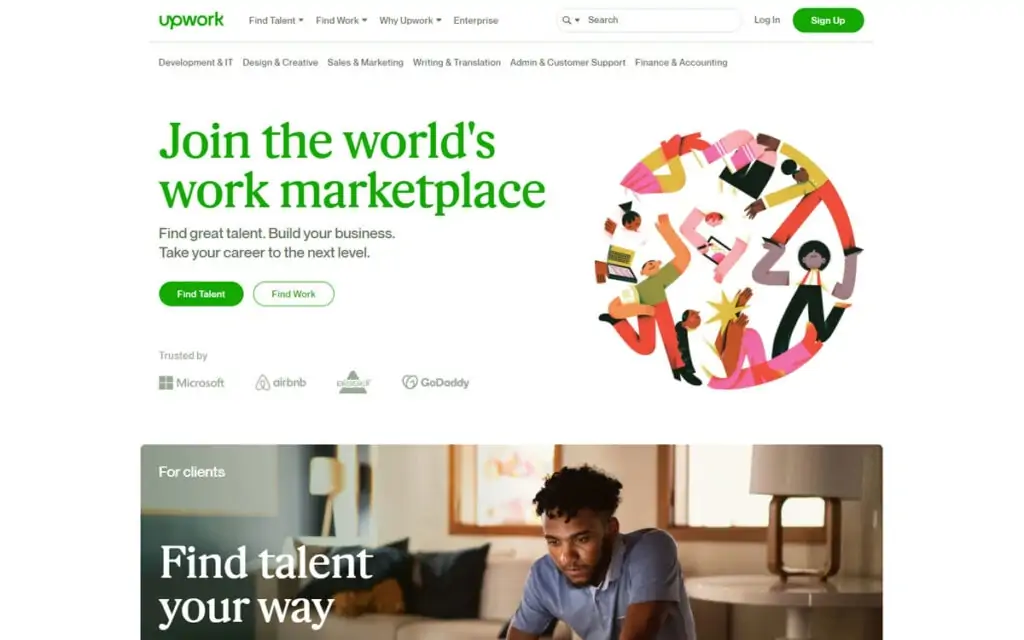
In the world of freelancing, finding clients is essential – and it can be challenging. That's why freelancing platforms have become popular in recent years, connecting professionals with clients worldwide. These platforms offer various services and benefits, from project management tools to payment processing, making them an attractive option for freelancers and clients.
Let's provide an overview of the most popular freelancing platforms, along with the pros and cons of using them. Plus, we'll share tips for creating a profile that stands out to potential clients.
Overview of Popular Freelancing Platforms:
- Upwork: Upwork is one of the largest freelancing platforms, offering various services, including web development, writing, and graphic design. Clients can easily browse profiles and portfolios to find the perfect project freelancer. Upwork also provides features like time tracking, payment processing, and project management tools to streamline the work process.
- Fiverr: Fiverr is best known for its unique approach of offering services starting at $5. However, freelancers can provide additional services at a higher rate, making it possible to earn more money. Fiverr is also unique because it lets buyers purchase other services like project management tools and customer support.
- Freelancer: Freelancer boasts over 52 million registered freelancers, making it one of the largest platforms on the market. It offers various services, including programming, graphic design, and marketing. Clients can post projects and receive proposals from freelancers or browse through freelancer profiles to find the perfect fit.
Pros and Cons of Using a Freelancing Platform
Pros:
- Access to clients: Freelancing platforms provide access to clients worldwide, giving freelancers additional earning opportunities.
- Streamlined work process: Platforms like Upwork help freelancers manage their work more efficiently by providing features like time tracking, payment processing, and project management tools.
- More secure payment: Payment processing through freelancing platforms is generally more secure than other payment options due to the platform's involvement in managing the payment.
- Complementary services: Many freelancing platforms offer additional services beyond project management, which can help freelancers streamline their work and provide better client outcomes.
Cons:
- Platform fees: Many freelancing platforms take a percentage of the freelancer's earnings as a platform fee, which can diminish the amount earned.
- Competition: Freelancing platforms are popular, meaning many freelancers compete for the same projects, requiring workers to differentiate their work and profiles.
- Dependence on the platform: Freelancers who rely on one platform may need help if it experiences difficulties or has changes in fees or rules.
How to Make a Profile That Stands Out to Clients
- Highlight Your Specialty: Clients want to know that you are an expert in your field, so highlight your skills and experience on your profile.
- Keep it simple but complete: Be concise in your presentation and messaging while ensuring to answer as much the client's request at the first moment.
- Showcase Your Best Work: Showcase your absolute best work by browsing other people's profiles in your field; you can find a benchmark of high-quality work.
- Use Professional Profile Pictures: Use professional profile photos that give the clients an idea of who you are and what you bring to the table.
- Ask For Review or Endorsement: It's good practice to ask for an endorsement or review of your work from clients after project completion, which helps increase the chances of landing your next gig.
Pricing Strategies

Pricing is often considered one of the most daunting tasks for freelancers. Finding the right balance between a fair rate and a good income can be challenging, especially for designers juggling different projects and clients. Nowadays, freelancers have multiple pricing models available, which can be a blessing and a curse. To help you find the best pricing strategies, we've compiled this section covering different pricing models, how to set your rates as a freelancer, and tips for negotiating with clients.
Different Pricing Models
- Hourly pricing: Hourly pricing is the most common pricing model for designers. You charge a fixed hourly rate to complete a project; the client pays for the total hours spent. This model works best for projects with a clear scope of work and ongoing collaboration.
- Project pricing: With this pricing model, you charge a fixed rate for the entire project. This model works best for well-defined projects with a clear timeline and deliverables.
- Retainer pricing: Retainer pricing is a pricing model that charges a fixed rate per month or week to reserve your services for clients requiring ongoing work.
- Value-based pricing: This pricing model is based on the value that you bring to your clients. To create value-based pricing, you must identify the business outcomes your work will drive for your client.
Making Money as a Freelancer
When it comes to setting rates, there's no one-size-fits-all model. However, some factors should be considered when setting rates and making money.
- Your experience level: Your experience level and expertise in your field can, and should, play a significant role in determining your rates.
- The complexity of the project: The more complex the project, the more you should charge.
- The industry standards: It's essential to research the rates of other designers within your industry to be competitive.
- The geographic location: The rates for your services may vary depending on your geographic location.
Tips for Negotiating with Clients
- Understand the client's budget: Knowing the client's budget can help you understand what they can afford.
- Don't be afraid to decline: If a client cannot afford your services, dropping the project or negotiating a lower rate is okay.
- Focus on client outcomes: When negotiating, focus on the results your work will drive for the client's business rather than just the cost.
- Know your worth: Have confidence in your skills and expertise, and don't undersell yourself.
- Get it in writing: Once you agree on pricing, get the details in writing to ensure clarity and communication.
Ultimately, determining the right pricing strategy, rates, and negotiating can be challenging for freelancers. However, by understanding the different pricing models, considering all factors when setting rates, and negotiating confidently, you can find a strategy that works best for you and your clients. After all, as a freelancer, finding the right balance between a fair rate and a good income is essential for building a prosperous and fulfilling career.
Creating Passive Income

Most of us face an uncertain income stream regarding freelancing and designing. One month we can have a flood of work; the next, we're left waiting for new contracts. But what if there was a way to earn money without the ongoing hustle? That's where passive income comes in.
Passive income is a way to earn money continuously without constant active involvement. Let's discuss passive income's definition and its importance to freelancers and designers. Plus, we'll explore various passive income streams designers can use.
Definition of Passive Income and Its Importance to Freelancers and Designers
Passive income is a stream of revenue that requires little to no active involvement, allowing you to earn money while you sleep, travel or work on other projects. Passive income will enable freelancers and designers to generate revenue in a way that doesn't trade time for money repeatedly.
It's an effective way to supplement your regular income, provide an extra financial cushion, and create a sense of financial stability. Passive income can also benefit freelancers who want to explore new areas of interest or spend time developing new skills or side hustles without worrying about their financial obligations.
Examples of Passive Income Streams in the Design World
- Stock Graphics: Stock graphics are digital images, icons, and illustrations sold online. Designers can create and upload designs to various stock graphics websites and get paid each time someone purchases their work.
- Templates: Designers can create templates that people can use to create their designs. Templates can range from social media templates to website templates and beyond.
- Online courses: Designers can create courses that teach design skills or techniques. These courses can be sold on Udemy, Skillshare, or Teachable platforms.
- eBooks: Creating an eBook around design or freelancing topics, such as branding or marketing, can be another passive income stream. Designers can create and sell eBooks on websites like Amazon or self-publish on their sites or platforms.
- Affiliate Programs: Designers can participate in affiliation programs on sales pages or websites, selling products from third-party platforms that offer a commission or promoting software.
Passive income isn't a magical solution to financial problems for freelancers. However, it's an excellent way to generate revenue on an ongoing basis while creating the freedom to concentrate on other areas of your business.
By exploring different passive income opportunities like stock graphics, templates, online courses, eBooks, and affiliating programs, you can help mitigate the uncertainty of the freelancing game and, at the same time, boost your income.
Furthermore, it would help if you saw it as a long-term plan and, for some opportunities, like building a great design template, investment, marketing, and specialisation are needed to make it successful. However, passive income is a great place to start if you strive for financial freedom.
Design Curated Templates
There’s an abundance of website builders out there that promise beautiful, designer-made templates for their users.
Ever wonder where they come from? In some cases, Hostinger’s website template allows you to be one of those pro designers earning from templates.
It’s one of the easier ways to put your design experience to profitable use. Given the nature of website builders – focusing on ease of use and Drag and Drop tools, you can apply your knowledge to make stunning templates.
Not only will you be helping future web admins create beautiful websites, but you will also cut out the middleman when looking for orders.
With Hostinger’s example, you must sign up, get accepted, set up your account, and start designing. Once your template is approved, you’ll start making money. You can earn up to $100 on each template by monetizing 5% of its revenue share.
Additionally, you’ll be able to include everything you make in your portfolio to help further build your credibility as a designer. An entry with a big-brand website builder next to your portfolio certainly won’t hurt either.
Leveraging Social Media for Passive Income

Social media has revolutionised how we communicate, connect, and do business. For freelancers or designers, it's a powerful tool to help you create a solid online presence, grow your network, and earn passive income. Social media platforms like Instagram, Twitter, or TikTok attract millions of eager users to discover new products, services, or content. Let's discuss tips for creating a solid online presence, exploring ideas for monetising social media, and balancing promotional and genuine content.
Tips for Creating a Solid Online Presence
- Choose your niche: Define your niche and audience, and create content around those topics to attract a specific audience.
- Consistency is key: Ensure that your content aligns with your brand message, and post regularly, either daily or weekly.
- Engage with your audience: Engagement is critical to creating a solid online presence. You can engage with your audience by responding to comments or DMs, creating polls or using a Q&A format.
- Build a brand story: A brand story gives your audience a glimpse into who you are as a designer and human being.
- Utilise visuals: Graphics, videos, and images can all grab your audience's attention and improve your social media presence.
Ideas for Monetising Social Media
- Sponsored posts: Sponsored posts are one of the most common ways of monetising social media. Sponsored content involves working with brands or products that align with your niche or audience and creating paid content to promote their products.
- Affiliate marketing: Affiliate marketing is another form of advertising in which you recommend a product or service to your audience and receive a commission from successful transactions.
- Sell digital products: Social media is an excellent tool to drive traffic to your website, where you can sell digital products like ebooks, templates, or stock graphics.
- Coaching and Consulting: Social media is an excellent tool to attract new clients to your coaching or consultation services.
- Public Speaking: Once you leverage your social media accounts to grow your audience or gain exposure, public speaking events can generate income for designers and freelancers.
How to Balance Promotional Content with Genuine Content
It's essential to balance promotional content with genuine content; otherwise, constant promotion can turn your followers off. Here are some ideas:
- 80/20 Rule: Follow the 80/20 rule, where 80% of your content is informative or entertaining, while the remaining 20% can be promotional.
- Storytelling: Use storytelling to promote sponsored content. Storytelling helps create a genuine connection between the audience and the brand, giving audiences a reason to engage with the post.
- Transparency: Be transparent with your audience about sponsored content. Disclose to your audience that the post is sponsored and follow the platform guidelines.
Leveraging social media for passive income can be an excellent opportunity for freelancers or designers. Freelancers can earn passive income by following the tips for creating a solid online presence and exploring ideas like sponsored posts, affiliate marketing, selling digital products, coaching, or speaking in public.
However, maintaining a loyal following is critical to balancing promotional and genuine content. As social media continues to evolve, staying on top of emerging trends and incorporating them into your social media strategy is critical.
Designing and Selling Your Products
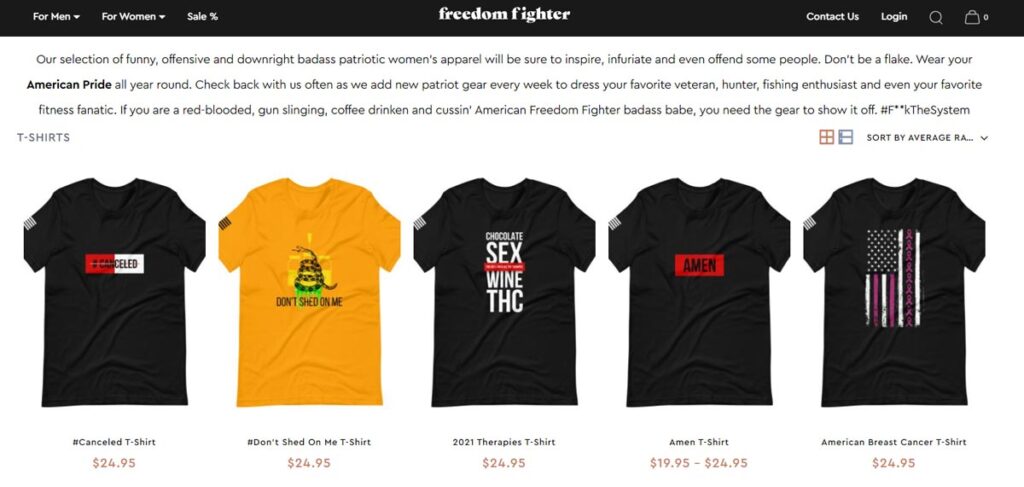
Designers have more significant opportunities to monetise their skills and passion. The internet has allowed designers to showcase and sell their products globally; whether a freelancer or an aspiring entrepreneur, designing and selling products online is an excellent opportunity to turn your skills into a lucrative business.
Let's explore the different types of products designers can sell, how to design products that appeal to your target audience, and platforms to sell your products.
Different Types of Products Designers Can Sell
- Prints and Posters: Prints and posters are a popular choice for designers. Inexpensive to produce, they can be sold in various sizes and styles to suit different tastes.
- Clothing and Accessories: Clothing and accessories are other popular options. Designers can create and sell t-shirts, sweatshirts, hats, bags, and other accessories using different printing methods that can be sold online.
- Stickers and Decals: Stickers are increasingly popular for decorating multiple surfaces. Designers can create custom stickers or decals with their designs that can be sold online.
- Digital Products: Digital products like ebooks, online courses, and design assets like fonts, icons and patterns can be excellent for designers since they're inexpensive to produce and deliver.
- Home Decor and Accessories: Designers can sell home decor and accessories such as coasters, mugs, pillowcases or other items people can decorate their homes with.
How to Design Products That Appeal to Your Target Audience
- Define your target audience: Define your audience, survey and gather feedback from them to understand their tastes, preferences, and needs better.
- Research Trends: Keep up with the latest design trends, styles, and colours to create designs that meet your audience's expectations.
- Focus on your niche: Focus on your niche, hone your style or focus on product types that suit your speciality.
- Create a brand identity: Create a strong brand identity by using unique logos or graphics to tie your products together while creating a sense of familiarity and connection with your target audience.
- Personalised Designs: People are more likely to buy personalised products or designs, so consider adding customisable options to your designs.
Platforms to Sell Your Products
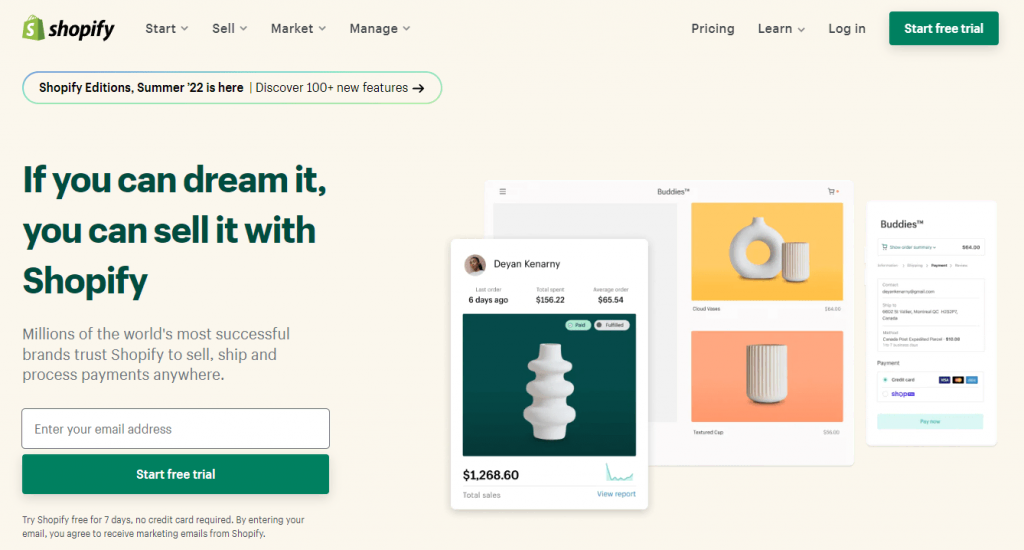
- Etsy: Etsy is an online marketplace that provides a platform to sell handmade, vintage, or unique items. Etsy is an excellent platform for designers selling custom designs or handmade products.
- Redbubble: Redbubble is an online platform that allows designers to sell their designs on various products, from stickers to home decor items, t-shirts, or even phone cases.
- Society6: Society6 is another online marketplace for designers to sell designs printed on various products, such as duvet covers, tapestries, phone cases, and other accessories.
- Shopify: Shopify is an eCommerce platform that enables designers to set up their online store and sell their designs on their websites.
Selling products and launching your brand takes time and effort, but the returns can be gratifying. Designers can monetise their skills by designing and selling their products online, opening up new revenue streams and opportunities. A designer can create a successful business by following simple strategies, like creating unique designs that appeal to your target audience or utilising platforms like Etsy or Redbubble to sell your products.
Crowdfunding
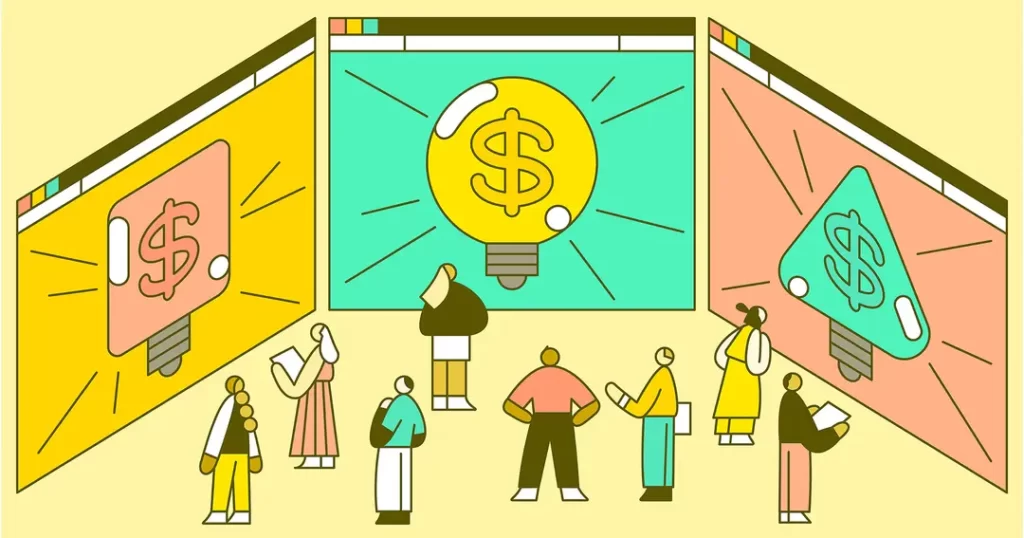
Crowdfunding has disrupted the traditional funding model for entrepreneurs, including designers. Crowdfunding offers designers a viable alternative to traditional funding sources like loans, grants, or venture capital, allowing designers to reach a global audience cost-effectively and efficiently.
Let's discuss how crowdfunding works and how designers can use it to fund their projects. We'll also look at some successful crowdfunding campaigns in the design world and explore best practices for running a successful crowdfunding campaign.
How Crowdfunding Works
Crowdfunding involves raising money from a large number of individuals through online platforms. Designers create a campaign describing their project, specifying the amount of money they need for funding, and in return, offer rewards or perks to supporters.
Crowdfunding can either be donation-based, rewards-based, or investment-based. In donation-based crowdfunding, individuals donate money to support a cause without expecting anything in return. Rewards-based crowdfunding, on the other hand, offers backers a reward or early access to the product in exchange for their support. Investment-based crowdfunding involves investors buying equity in the company or project.
Examples of Successful Crowdfunding Campaigns In the Design World
- The Pebble Watch: The Pebble Watch is one of the most successful crowdfunding campaigns in the design world. The creators launched a campaign in 2012, which raised over $10 million in just a few weeks. The watch features fitness tracking, email and app notifications, and music control. This project is an example of a game-changer in the industry as Pebble developed and released a product that appealed to its target audience.
- BauBax Travel Jacket: BauBax Travel Jacket is another popular crowdfunding project. It raised over $9 million in funding in 2015. The jacket had 15 features that catered to the needs of travellers, including a built-in neck pillow, gloves, an eye mask, and multiple pockets for electronic devices.
- Oculus Rift: Oculus Rift is a virtual reality headset that launched a campaign in 2012 and was acquired by Facebook a couple of years later. The campaign raised over $2 million and was successful as it attracted a new level of attention towards the possibilities of VR.
Best Practices for Running a Successful Crowdfunding Campaign
- Plan ahead: Designers should develop a solid plan before launching a campaign. This includes identifying their target audience, setting realistic funding goals, and creating a clear communication strategy with backers.
- Offering enticing perks: Offering bonuses to backers helps incentivise potential supporters to contribute to the campaign.
- Focus on visuals and storytelling: Designers should create polished and professional visual materials and photos to showcase their work and add their personal touch to their projects' stories.
- Promote the campaign: Designers should drive traffic to their crowdfunding page through various marketing channels, including social media, email newsletters, and digital marketing campaigns.
- Keep supporters engaged: Consistently communicate with supporters and keep them updated about the project and progress. Keep them involved during and after the project.
Crowdfunding is a viable source for designers looking to bring their ideas to life. Crowdfunding not only provides funding but also helps to market your product and grow your customer base. Designers need to plan and strategise the crowdfunding campaign thoroughly.
Designers can create a successful campaign to engage supporters and drive funding for their design projects by creating a compelling story, offering standout perks, and incorporating high-quality visuals.
Upskilling and Advancing your Career as a Designer
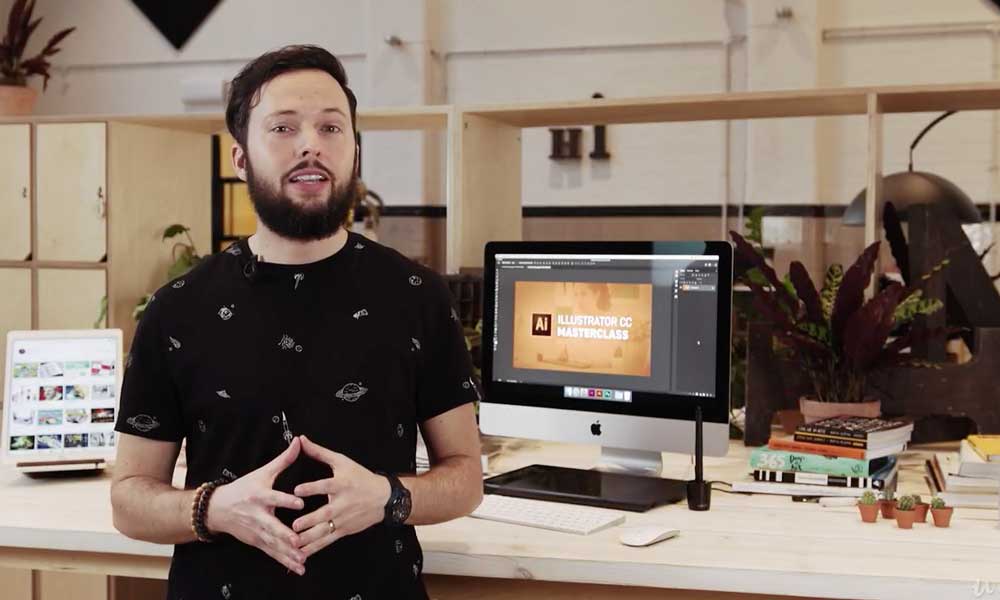
As a designer, advancing your career means more than getting a promotion or a pay raise. Career advancement is about expanding your skills, gaining new experiences, and becoming an expert. Advancing your career as a designer requires time, patience and expertise.
However, it could lead to greater job satisfaction, professional growth, and financial stability. Let's explore what it means to advance in your career, different options for career advancement, and the benefits of increasing one's career as a designer.
What it Means to Advance in Your Career as a Designer
Advancing in your career as a designer means you are no longer content with completing routine tasks or working on small projects. It means you want to take on more significant challenges with greater responsibility. It also means you want to acquire new skills, learn from other designers and advance in your position. Moving up in your career requires you to be proactive, take the initiative, and continuously learn and evolve.
Different Options for Career Advancement:
- Specialised Training: Specialised training is an excellent way of advancing your career as a designer. You can improve your design abilities by attending workshops, taking masterclasses or enrolling in short courses. Specialised training could be focused on graphic design, web design, user experience design, animation, or any other design-related field. Specialised training will enable you to enhance your skill set, keep up with industry trends, and make innovative design decisions.
- Certifications: Certifications are a great way to advance your career as a designer because they verify your abilities and knowledge. Certifications demonstrate mastery of a particular skill and help identify your career goals. Popular design certifications include the Adobe Certified Expert (ACE), Hubspot Inbound Certification, and Google Analytics Certification.
- Advanced Degrees: Advanced degrees, such as a Master's degree in graphic design, web design, or animation, are another option for career advancement for designers. Earning an advanced degree could open up employment opportunities and advance your skills, leading to professional growth.
Benefits of Advancing Your Career
- Increased Marketability: Advancing your career demonstrates that you are committed to constant improvement, which makes you more attractive to potential employers. These skills help differentiate you from other candidates, attract lucrative job offers and increase your worth in the industry.
- Higher Salary: Advancing your career often comes with a salary increase. By acquiring new skills, certifications or advanced degrees, you will be qualified for higher-paying positions with more benefits.
- More Opportunities: As designers advance their skills and become more experienced, they open themselves to more job opportunities. This could lead to entrepreneurship or the chance to work on exciting projects with top companies.
- Improved Job Satisfaction: Advancing your career could lead to greater job satisfaction. Designers may feel more fulfilled with their jobs as they take on more innovative projects and receive recognition for their developed skills and expertise.
Advancing your career as a designer is about pursuing growth and continuous learning. It requires a proactive attitude and a willingness to explore new areas and acquire new skills. Improved marketability, higher salary, new opportunities and increased job satisfaction are just a few benefits of advancing your career as a designer. Explore different options, invest in your professional development, and take the following steps towards advancing your career as a designer.
Upskilling
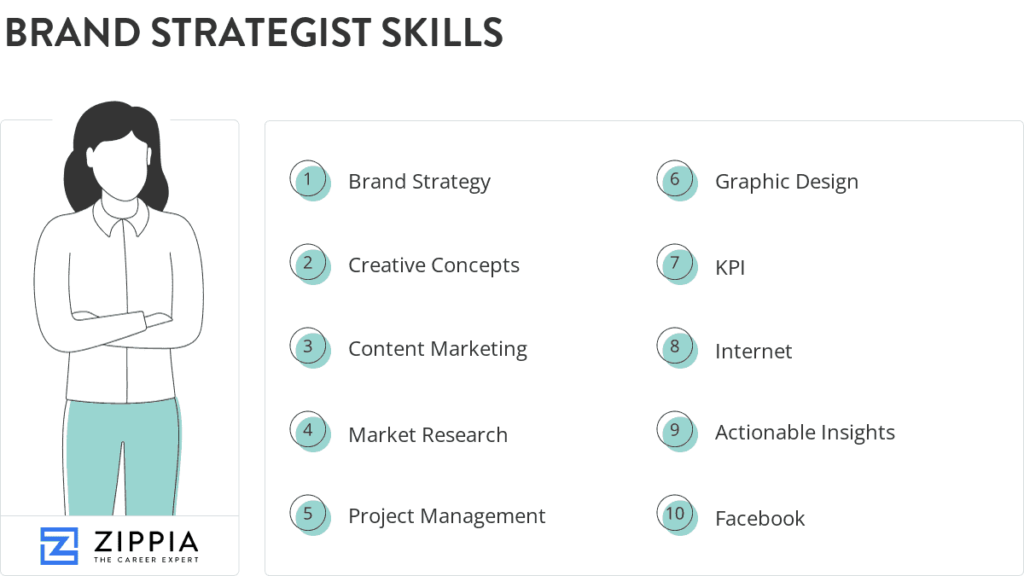
As a designer, one of the keys to staying competitive in the job market is acquiring new skills and keeping up with the latest trends. This is where upskilling comes in.
In today's rapidly changing and evolving tech-driven world, upskilling is no longer beneficial for designers but has become necessary. Let's discuss what upskilling is, why it's critical for designers, and how to choose the right upskilling opportunity.
What Is Upskilling, and Why Is It Crucial for Designers?
Upskilling is acquiring new knowledge, abilities or competencies relevant to your career field. As a designer, upskilling could mean learning a new design software or programming language, mastering the latest design techniques, or improving your communication and project management skills. Upskilling is essential for designers for several reasons, including:
- Keeping up with Changing Industry Trends: The design industry continuously evolves, and the demand for new design skills is rising. Staying on top of trends through upskilling will give designers an edge in the competitive job market.
- Enhancing Employability: Employers seek designers who offer more than just the basics. Upskilling sets designers apart by providing them a competitive advantage for desirable roles and companies.
- Boosting Earning Potential: Upskilling can lead to promotions, salary increases, and more significant job opportunities that pay well. According to Hays Salary Survey, professionals who undergo regular skills training earn up to 35% more.
Different Ways Designers Can Upskill
- Online Courses: Due to their flexibility and affordability, online courses have become popular among designers. Sites like LinkedIn Learning, Skillshare, and Udemy provide design courses.
- Industry Workshops and Conferences: Industry workshops, conferences, and events are great opportunities for designers to learn from industry experts, network and acquire new skills.
- Collaborate with Peers: Collaborating with other designers who may specialise in other areas of design can broaden knowledge and skills and help identify areas that need improvement.
Tips for Choosing the Right Upskilling Opportunity
- Identify Skill Gaps: Determine the skills you want to acquire, where you need improvement and the level at which you wish to develop expertise. This will help you focus on choosing the right upskilling opportunity.
- Quality over Quantity: Not all upskilling opportunities are equal. Some upskilling opportunities may only offer basic information that aligns differently with career goals. Look for credible and reputable sources to ensure the course provides value.
- Consider Flexibility: Balancing your current workload with upskilling can be challenging. Choose upskilling opportunities that allow flexibility while providing the necessary knowledge and practical application.
Upskilling as a designer is critical to career growth and advancement. With the fast-evolving design industry, staying current with the latest trends and technology is not optional.
Through the various upskilling opportunities available, designers can invest in themselves by enhancing their knowledge and abilities, expanding their career prospects, and earning more. The most crucial considerations when choosing the right upskilling opportunity are identifying skill gaps, prioritising quality over quantity and finding a flexible course that can accommodate other commitments.
Upskilling is an ongoing process that requires continual learning and self-improvement, and investing in it can set you apart as a designer.
Conclusion
Making money as a designer can be challenging, but leveraging various strategies and embracing new opportunities can increase your earnings and achieve financial success in the design world. Whether you freelance, create passive income streams, sell products, or advance your career, there are numerous pathways to success.
Whatever your goals are, it's crucial to stay up-to-date with the latest trends, remain adaptable, and stay true to your artistic vision when making money as a designer.
